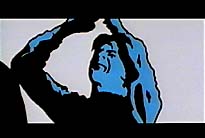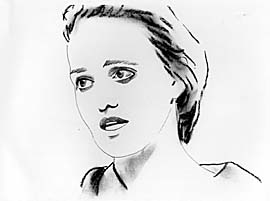--------------------------------------------------
Anyone who has sat down in front of the TV, movie theater or internet recently cannot fail to notice the prevalence of animation. Animation is coming into its own; there is hardly a TV commercial that doesn’t incorporate some sort of animation. Digital technology had made animation easier and inexpensive to create – anyone with a digital camera and a basic move making program on their computer cans move things around and take some pictures (or frames as we call them) and string them together into animation.
Because of this, filmmakers and especially documentary filmmakers are realizing just how important it is to include the visual feast that is animation into their productions, or create entire productions with animation. This goes beyond the typical scientific and informational visualization (animated graphs, medical and chemical illustrations, textbook images that move) with which we are all familiar and are very straightforward in their presentation of information. Below are several animated films that use the technique to drive home a theme or message that would be very difficult to do with live action.
Creating an emotional atmosphere
His Mother’s Voice
by Dennis Tupicoff


This film uses a radio interview of a mother recounting the loss of her son and animates two very haunting takes. The first is high contrast, bold, colorful images and a reenactment as the mother tells the story. The second take, set to the same soundtrack, does not reenact the story but simple moves throughout the house, the yard – wholly in the present. The animation is rendered with light pencil lines very little color. The sense of drama in the first take juxtaposed with the quiet grief of the second fully encompasses the many facets of this death.
Illustrating an emotional or mental state
Ryan
by Chris Landreth
 An interview with Ryan Larkin, a promising young animator who destroyed his career through alcohol and drug abuse To visualize the effect of heroin eating away at a creative mind, Landreth creates a character whose face is disintegrating as he speaks, and yet there are sparks of brilliance still hanging by a thread. If you were to look at Ryan in live action, he would seem a sloppy, drug addict who can barely put together a sentence. But in visualizing him this way, the dignity of who is was in the past comes through the shell of the man he is now.
An interview with Ryan Larkin, a promising young animator who destroyed his career through alcohol and drug abuse To visualize the effect of heroin eating away at a creative mind, Landreth creates a character whose face is disintegrating as he speaks, and yet there are sparks of brilliance still hanging by a thread. If you were to look at Ryan in live action, he would seem a sloppy, drug addict who can barely put together a sentence. But in visualizing him this way, the dignity of who is was in the past comes through the shell of the man he is now.Using Humor to capture an audiece

The Meatrix
Leo, Chickity and Moopheous discover the true reality behind what we eat. Free range studios and Grace Studios ride the wave of the popular Matrix films to convey the unethical and unhealthy aspect f the commercial meat industry. A clever spoof, a well written script and a highly accessible web distribution plan created a buzz around this film reaching an audience far more extensive than the typical festival goers.
 Animating the past
Animating the pastPersepolis
by Marjane Satrapi
An autobiographical coming-of-age story of a precocious and outspoken young Iranian girl that begins during the Islamic Revolution. The memory of the past is brought to life with character and humor and the comic book graphics not only provide a visual feast, but are able to put us in the experience of the child as she becomes a woman.
 Dealing with graphic subject matter
Dealing with graphic subject matterWaltz with Bashir
by Ari Folman
After a conversation with an old friend, Ari Folman realizes that he can’t remember his experiences on an Israeli Army mission in the first Lebanon War of the early eighties. As Ari delves deeper and deeper into the mystery, his memory begins to creep up in surreal images …
Again, dealing with memory, but trying to present the graphic horror of war without turning the audience away. Graphic images are more palatable (and more emotional) when they are drawn rather than live action. At the end of the film there is about 3 minutes of newsreel footage that shows the carnage of the Lebanon massacre and honestly it turns your stomach. It brings the audience into reality right at the end for an overwhelming impact.
Dealing with shy subjects and overcoming audience stereotypes
Survivors
by Sheila Sofian
 With powerfully understated empathy, Sofian combines voice-over interviews with battered women, and a counselor who works with "recovering" male batterers, with elegant animation to explore the experience of domestic violence from all sides.
With powerfully understated empathy, Sofian combines voice-over interviews with battered women, and a counselor who works with "recovering" male batterers, with elegant animation to explore the experience of domestic violence from all sides.Many of the women in this film did not want to be videotaped because they feared for their safety. However, they were willing to have their voice recorded. Unless you are a trained actor, it is impossible to ignore a camera in you face, but a microphone and a conversation can bypass that shyness and subjects are more likely to open up quickly. Additionally, having only the voice as information about a person allows the audience to put themselves in the subject’s place. When we are looking at video of another person, immediately we are judging them on their appearance. With no image to feed our stereotypes, we are forces to listen to the word spoken.
These are just a few examples of animation used in documentary and memoir. Animation is quickly developing into a distinct visual dialect and filmmakers will do well to verse themselves gain some level of fluency in this powerful medium.

No comments:
Post a Comment